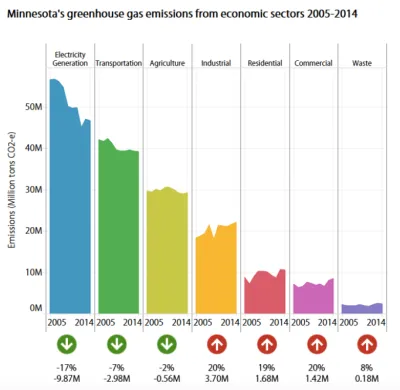Xcel’s new vision: 85% carbon free by 2030


latest resource plan with its new 2030 vision
Last month, Xcel Energy quietly announced it is taking a big step forward for clean, affordable energy in Minnesota. This vision is good for Minnesota consumers, and CUB thanks Xcel for its leadership.
Before Public Utilities Commissioners at a meeting in St. Paul on October 17, Xcel CEO Ben Fowke introduced the company’s new goal of using 60% renewable energy in Minnesota by 2030. Adding in Xcel’s two nuclear plants, that would make Xcel’s electricity mix 85% carbon free. Xcel will do this, Fowke said, while keeping bill increases at or below the change in the consumer price index which is a much better deal for Minnesota customers than building new power plants This is a big acceleration in clean energy over Xcel’s latest 15-year resource plan, finalized just earlier this year, which called for 35% renewable energy by 2030. Fowke said Xcel is on track to achieve just five years from now.
The cost-effective choice
This rapid shift to renewable energy isn’t only good for the environment, it’s good for customers’ budgets. Renewable energy, wind power in the Midwest specifically, is the cheapest source of electricity available today. Fowke reported that it’s cheaper to build new wind turbines than to simply operate even the lowest-cost of Xcel’s existing coal power plants. Yes, you read that right. And utilities and grid managers are continually getting better at integrating intermittent renewable energy into the electric system. Whereas 15 or 20 years ago, it may have seemed nearly impossible to integrate 10% wind and solar, Xcel no longer blinks an eye at 60% renewables.
Reducing greenhouse gas emissions

According to Fowke, Xcel’s vision achieves an 80% reduction of greenhouse gas emissions in 2030. That is great news – because to reach the state’s greenhouse gas goals, we know that the electric sector will have to go even farther. By law, Minnesota has a goal of reducing total greenhouse gas emissions to at least 80% below 2005 levels by 2050. These reductions have proven to be harder to reach in transportation and other sectors of the economy than in the electric sector. Studies show that in order to get to an 80% reduction statewide, the electric sector will likely have to go beyond 80%, and we’ll have to increasingly use electricity for transportation and other purposes.
Fortunately, as Xcel’s vision shows, clean electricity is the best choice for consumers. With these kinds of numbers, it may be possible for Xcel to reduce emissions even farther, and to do so with even greater financial savings for consumers – and other utilities can do the same. CUB thanks Xcel for showing that clean energy can be affordable and a win-win for utilities, consumers, and the environment. We look forward to seeing how far we can go together toward cleaner and more affordable energy.